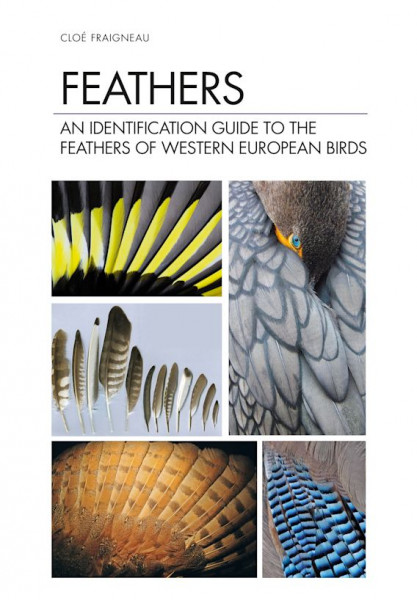
Publisher: Helm, London
Publication Year: 2021
Binding: 2
Page Count: 400
ISBN Number: 9781472971722
Price: £54.99
Feathers: An Identification Guide to the Feathers of Western European Birds
The pattern and colouration of feathers provide valuable and often memorable clues to bird identification. Taken in isolation, however, feathers can be surprisingly hard to identify, particularly for those who do not have experience of birds in the hand. If you have even the slightest inclination to identify the feathers that you come across, this reference guide is a revelation – not to mention a thing of great beauty!
The book comprises eight chapters, including introductory sections on feather collection and preservation, the identification process and feather adaptations, and an extensive appendix. The introductory chapters are all packed with useful information and practical tips that help to narrow down the options when faced with an unfamiliar feather. After these come a series of identification exercises, an inspired inclusion that adds a genuinely interactive element to aid learning and prepare the reader for the challenges of identifying lone feathers.
The species descriptions that follow account for about two-thirds of the content and cover more than 400 species. These are treated in groups of birds with similar feathers and/or lifestyles: passerines, near-passerines, aquatic birds, terrestrial birds of dry habitats (galliformes, bustards) and birds of prey. Whilst this arrangement is at odds with the way standard bird identification guides tend to be organised, it makes perfect sense when faced with a feather in isolation: convergent evolution has led to many examples of quite distantly-related species having similar-looking feathers. The distinctive criteria of the feathers of each group are presented, before a detailed description of the characteristics of those of each species within it. There are comparison tables of measurements of the larger feathers (typically wing and tail) for sub-groups of species, for example the flycatchers, the buntings, and pipits and wagtails. Other helpful tables include ones that compare primaries and secondaries separately, and the colour characteristics of feathers of birds from the same grouping.
Finally come the plates, which are a joy to behold! These feature high-quality photographs of the most distinctive feathers, typically from between two and six species per page, with each page being just under A4 dimensions. For many species, there are also smaller photographs of a whole wing which provide valuable context, particularly for readers who are not familiar with the typical shapes of the different wing feathers.
It is impossible to do this book justice in a short review but suffice to say that it is the most visually appealing, informative and educational bird book I have opened in a very long time!
Book reviewed by Nick Moran
Buy this book




Share this page